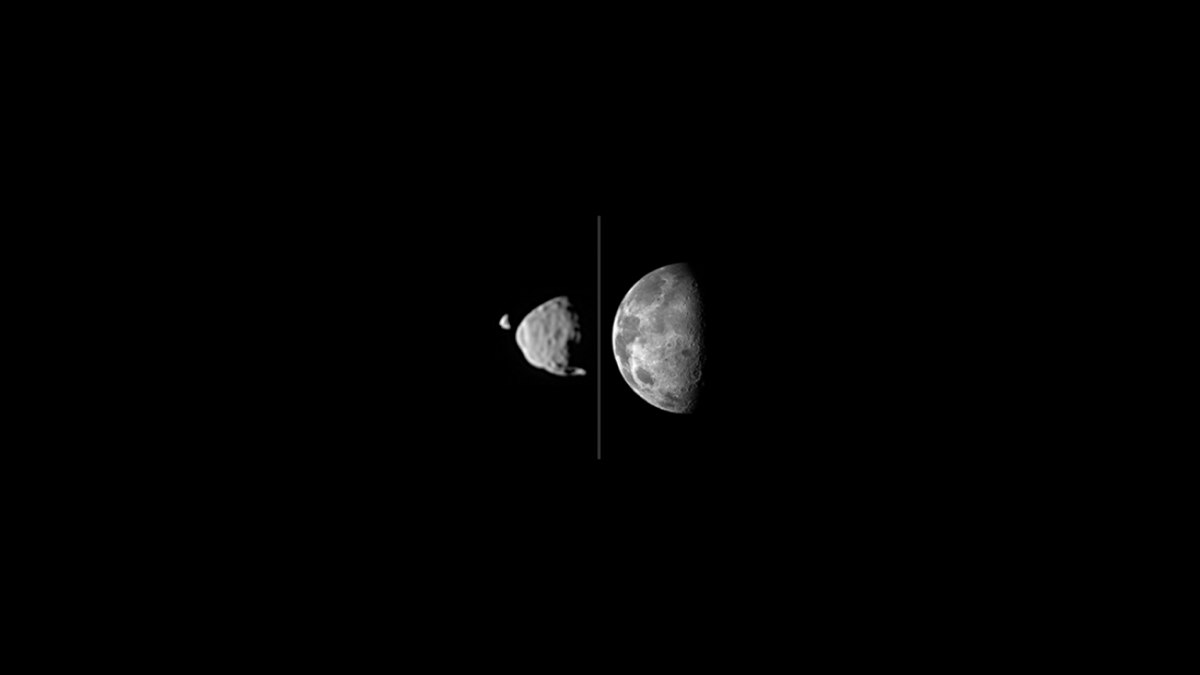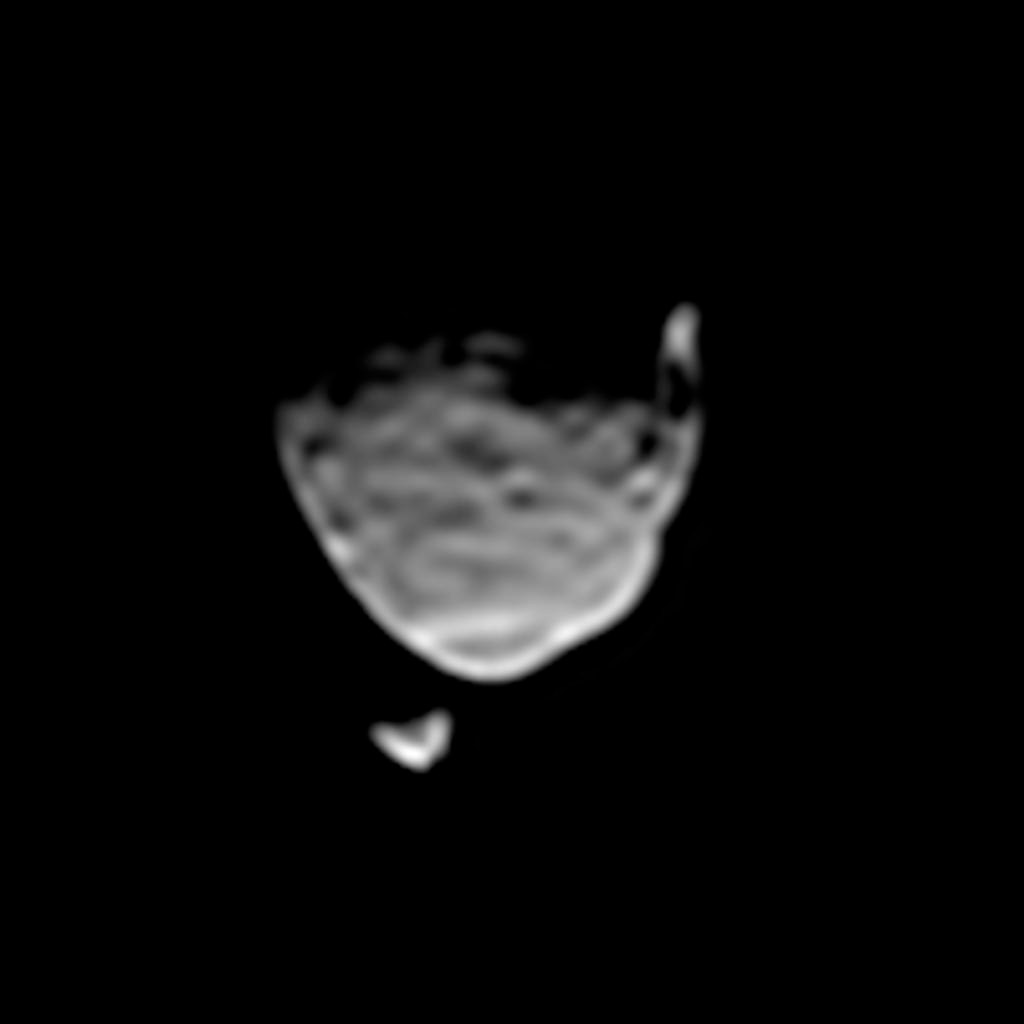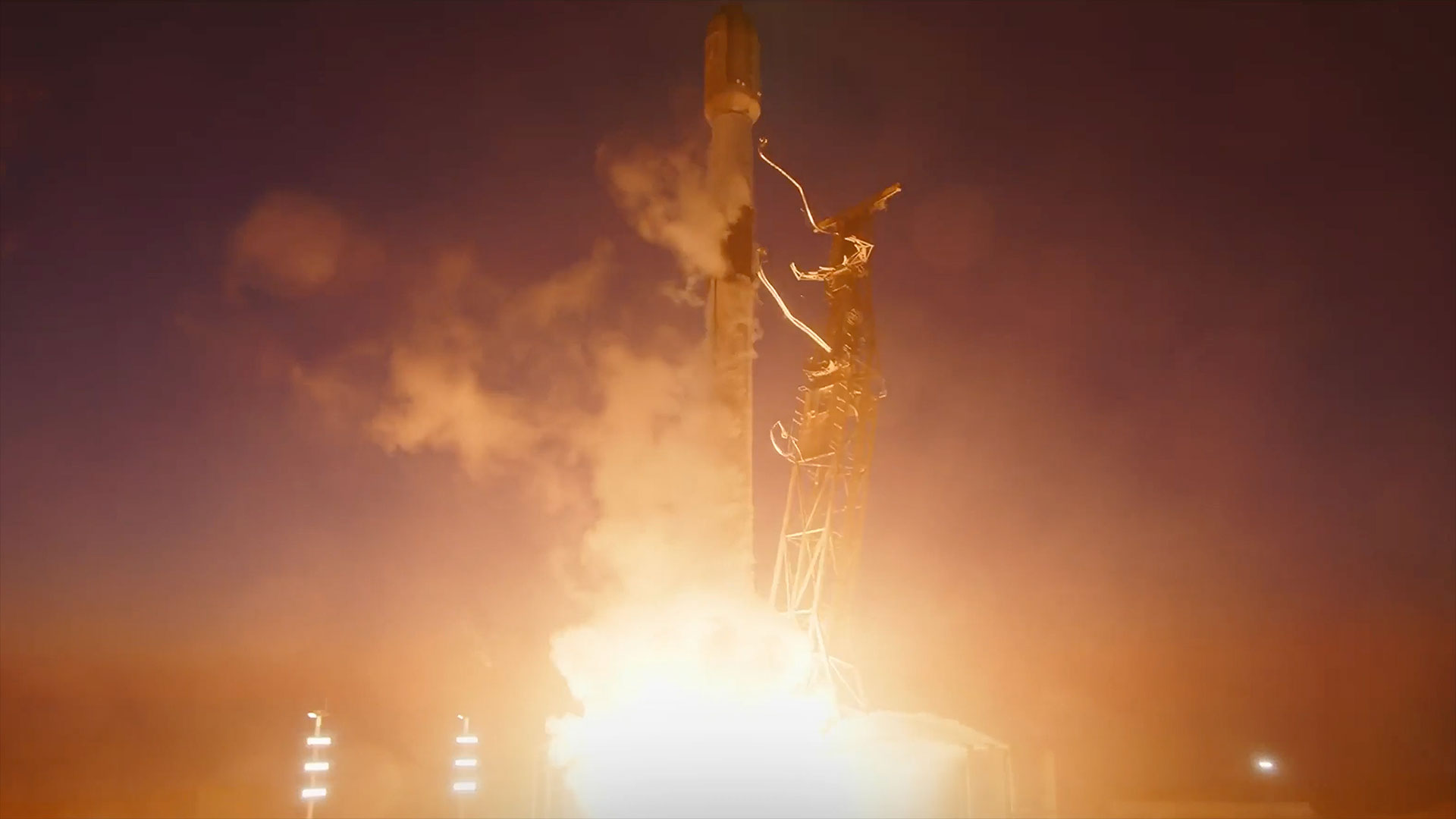
If you could look up at the night sky from the surface of Mars, what would you see?
First, there would be some slight differences in the stars' paths. All of the familiar stars and constellations would appear the same as they do from here on Earth. However, because the north and south poles on Mars are oriented a bit differently than they are on Earth, the stars would appear to wheel across the sky on somewhat different paths.
For example, the north polar axis of Mars does not point toward Earth's North Star (Polaris), but rather toward a vacant spot in the sky roughly midway between the bright star Deneb in the constellation Cygnus and the fourth-magnitude star Erakis in the constellation Cepheus. So there is no "North Star" as seen from Mars. [Moons of Mars: Phobos and Deimos in Photos]
And there is no "South Star" either, although the Martian south polar axis does point toward a spot in the constellation Vela, not far from the diamond-shaped pattern of stars known as the "False Cross" (not to be confused with Crux, the Southern Cross).
Second, Mars explorers would be treated to the unusual sky sight of two tiny moons, Phobos and Deimos, that are likely asteroids that were captured in the distant past by the Red Planet's gravity.

Both moons were discovered in August 1877 as a result of a systematic search by Asaph Hall (1829-1907) of the U.S. Naval Observatory. Hall didn't find any moons for a long while and actually became so disconsolate that he considered giving up the search, but after some encouragement from his wife, Angeline Stickney Hall, he persisted and found two satellites within several nights of each other.
Hall named the moons Phobos ("fear") and Deimos ("panic"), after the two sons of the Roman god Mars; those figures served as Mars' chariot attendants as well as his constant companions.
Breaking space news, the latest updates on rocket launches, skywatching events and more!
Phobos and Deimos are so small that even in large Earth-based telescopes they appear as mere points of light. Phobos, the larger of the two, measures 14 miles (23 kilometers) across, while Deimos is just 8 miles (13 km) wide.
Both satellites revolve around Mars in nearly circular orbits, and very nearly in the plane of the planet's equator. Phobos orbits a mere 3,700 miles (6,000 km) above the Martian surface. Astronomers have deduced that Phobos is drawing closer to Mars at the rate of 0.7 inches (1.8 centimeters) per year and conceivably could crash into the Red Planet in 40 million to 50 million years. Before that happens, however, strong tidal forces induced by Mars should break Phobos into a myriad of particles that would encircle Mars in a series of thin rings.[Mars Rover Sees Phobos and Deimos (Video)]
Deimos orbits a bit farther out, at a distance of 12,400 miles (20,000 km).
Weird moon views
Interestingly, because of the two moons' extreme closeness to their host planet, there are actually parts of Mars from which Phobos and/or Deimos would not be visible — the bulge of Mars' own curvature gets in the way! For any place on the Red Planet's surface beyond 83 degrees north or south of the equator, for example, Deimos could never be seen. Phobos could never been seen from any location beyond 70 degrees north or south of the Martian equator.
Because both Phobos and Deimos move almost exactly parallel to the Martian equator, the best views of both moons would come at the planet's equatorial region. But an astronaut standing there would see these two moons move across the night sky in quite different ways.
To understand these motions, first keep in mind that, like Earth's moon, both Deimos and Phobos move in their respective orbits from west to east.
Since the Earth rotates from west to east on its axis more than 27 times faster than the moon revolves once around its companion planet, Earthlings are accustomed to seeing the moon rise in the east, cross the sky and set in the west. This happens because the planet's citizens are all carried along by Earth's rotation toward the east; about every 25 hours, Earthlings are rotated first toward the moon, then overtake it and ultimately leave it behind (in the west).
Now consider the situation with Mars' moons. Deimos takes 30 hours and 18 minutes to make one swing around Mars, and the Red Planet makes one full turn on its axis every 24 hours and 37 minutes. So an observer on the Martian surface would see Deimos rise in the east, but the moon would then move across the Martian sky at a very slow pace. In fact, it would take about 33 hours to get directly overhead (or very nearly so), and then another 33 hours to descend and set in the west.
And then, the Martian explorer would have to wait another 66 hours before Deimos again reappeared above the eastern horizon!
In contrast, Phobos takes only 7 hours and 39 minutes to orbit Mars. So it has the distinction of being the only natural satellite in the solar system that revolves around its host planet in a time shorter than the planetary "day," running three laps around the Red Planet during each Martian day.

As a consequence, as seen from the Martian equator, Phobos would appear to move far more rapidly than Deimos. In fact, Phobos would already be moving overhead just 2 hours and 48 minutes after rising. And after another 2 hours and 48 minutes, it would already setting. An astronaut on Mars could therefore witness Phobos rising twice during a single night.
And since Phobos' west-to-east motion is much faster than Mars' rotation period, the satellite would appear to rise in the west and set in the east.
Furthermore, about every 10 hours and 18 minutes, Phobos would appear to race closely past Deimos as the two moons trekked in opposite directions. Phobos, in fact, would probably even briefly eclipse Deimos as seen from some parts of Mars on each pass.
Try picturing this: During the 66 hours that Deimos moves ponderously in the sky toward the west, Phobos whizzes rapidly in the opposite direction more than six times!
Phases, too
Phobos goes through its entire cycle of phases in the short time it takes to go once around Mars. If, for example, Phobos were rising in the west just as the sun were setting, it would be at its "new" phase. A little over four hours later, it would already have moved well past the overhead point to a position roughly halfway up in the east and would appear "full." When it set in the east about an hour and a half later, it would have waned to its "last quarter" phase.
As for Deimos: Because the sun moves across the sky more than twice as fast as Deimos does, this moon would appear to go through a full set of phases more than twice during the 66 hours that it is continuously above the horizon.
Unfortunately, because of the very small size of both satellites, Mars skywatchers should not expect to see the same kind of sight that Earthlings are accustomed to seeing with their own moon. Deimos, for example, would appear only about one-nineteenth the apparent width of Earth's moon. The Mars satellite would shine at its very best when at its "full" phase, but because of its very small size it would probably look more like an oversized version of Venus to the unaided eye.
Phobos, the closer and larger of the two moons, would appear noticeably bigger and brighter. It would appear about one-third as large as Earth's moon (as seen from Earth). At Phobos' peak brightness, it would shine perhaps 20 times brighter than Deimos.
But neither Martian satellite is a sphere like Earth's moon; rather, they are irregularly shaped lumps, pitted (especially in the case of Phobos) with a variety of craters. One crater on Phobos that stands out in spacecraft observations measures roughly 6 miles (10 km) across and has been named "Stickney" in honor of Asaph Hall's wife.
Some have suggested that, as seen from Mars, Phobos would resemble a shiny potato in the sky. But perhaps Isaac Asimov (1920-1992) said it best in his book, "Science, Numbers and I" (Doubleday, 1968): "The interplay of light and shadow [on Phobos] will produce a fascinating display of kaleidoscopic change that will never exhaust the fancy."
Joe Rao serves as an instructor and guest lecturer at New York's Hayden Planetarium. He writes about astronomy for Natural History magazine, the Farmer's Almanac and other publications, and he is also an on-camera meteorologist for News 12 Westchester, N.Y. Follow us @Spacedotcom, Facebook or Google+. Originally published on Space.com.
Join our Space Forums to keep talking space on the latest missions, night sky and more! And if you have a news tip, correction or comment, let us know at: community@space.com.

Joe Rao is Space.com's skywatching columnist, as well as a veteran meteorologist and eclipse chaser who also serves as an instructor and guest lecturer at New York's Hayden Planetarium. He writes about astronomy for Natural History magazine, Sky & Telescope and other publications. Joe is an 8-time Emmy-nominated meteorologist who served the Putnam Valley region of New York for over 21 years. You can find him on Twitter and YouTube tracking lunar and solar eclipses, meteor showers and more. To find out Joe's latest project, visit him on Twitter.
